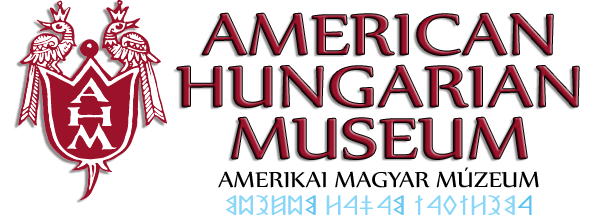FAMOUS HUNGARIANS
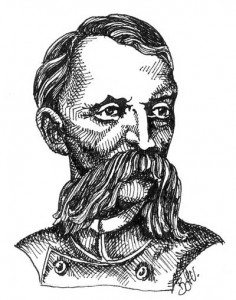
Asbóth Sándor (1811–1868)
* Keszthely – † Buenos Aires,
Argentina. Mérnök, a 1848-as Szabadságharc ezredese; az amerikai polgárháború tábornagya. USA-nagykövet Uruguayban és Argentinában.
Elkészítette New York városrendezési tervét és a híres Central
Parkot ő tervezte meg; ő alkalmazott először bitument járdaburkolásra.
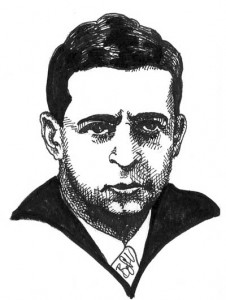
Jenő Barnóthy (1904 – 1996)
* Kassa, Hungary – † Chicago, Illinois, USA
Professor Barnóthy, astro- and nuclear physicist, emigrated to the United States with his wife and fellow scientist, Magda Forró in 1948. They first taught physics at the Barat College in Forest Lakes, Illinois. In 1955, they were commisioned to direct a company which manufactured radiological research equipment. Barnóthy became president of the Biomagnetic Research Foundation and director of the Forro Science Co. He held numerous patents regarding the manufacture of equipment for the exploration of radiation. Several hundred of his scientific articles were published regarding cosmic radiation, astro-, nuclear- and biophysics. His last article, co-authored with his wife (What is Time?) was published in 1991. Both Barnóthy’s and Forró’s achievments were outstanding in researching the phenomena of cosmical radiation – a prerequisite for conquering the universe.
József Dallos (1905 – 1979)
* Hungary – † London, England
Dallos, a physician, developed the process for preparing molds from the living eye after discovering the necessary materials. It was his research, that made the manufacture of contact lenses which fit the shape of the living eye possible for the first time in the world in 1929. Such lenses could be worn all day. Dallos created the fluidless contact lens as well. In 1937 he moved to London and worked there. Since his death in 1979, the British Contact Lens Association anually distributes awards named after Dallos.
The Hungarian István Győrffy is credited with the development of the soft contact lense.
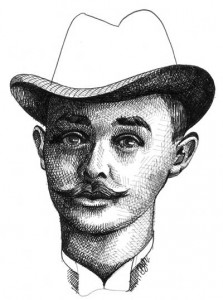
Árpád Dékáni (1861 – 1931)
* Alsójára, Transylvania, Hungary – † Borbánd, Transylvania
Dékáni, art teacher and designer, passionatly collected and cataloged Hungarian motifs. He designed a new, original and artistic Hungarian needlepoint lace, the well-known Halas Lace. It was the first characteristically Hungarian needlepoint lace. The realization of Dékáni’s conceptions and designs, the Halas Lace, soon became popular abroad. Hungary’s Department of Religion and Education commisioned Dékáni to organize lace making courses. With this, the Hungarian handicraft movement took its beginning.
Lajos Döme and András Kézsmárki
Invention of 1999!
In 1999 Döme and Kézsmárki invented a method for the utilization of raw rubber wastes. This was accomplished by separating reusable uncured rubber from its reinforcement, using a mechanical procedure and a new machine. By applying this method, 70% of rubber wastes could be reused in manufacturing rubber products. This invention won two gold, one silver medal and a special award at four international exhibitions for inventions.
István Dorogi (* Hungary, 1885 – ?)
Dorogi was a chemical engineer and inventor. Between 1929 and 1934, he developed a process for the industrial mass production of inflatable formes/figures made of rubber. For this procedure he obtained 52 Hungarian and 150 international patents. The solutions and methods he developed are widely used in the modern rubber industry to manufacture inflatable toys, boats, life-savers, etc.
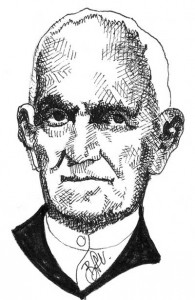
P. Gyula Fényi, S.J. (1845 – 1927)
* Sopron, Hungary – † Kalocsa, Hungary
P. Fényi, astro-physicist and Jesuit friar, was the director of the Haynald Observatory at Kalocsa, Hungary. He was the first to recognize the importance of solar protuberances. Fényi proved that the frequency of solar protuberances varies according to the number of sun spots. His meteorological and geophysical studies were also significant. A crater on the moon was named after him.
Pál Greguss (* Budapest 1921 – )
Greguss, chemical engineer and physicist invented the Pál-Optic. This invention is a panoramic lens and is among the instruments of the space probe launched within the Deep Space Program. While it takes the Sojourner 6000 photographs to assemble a panorama picture, the Pál-Optic is able to do so in ONE. This lens provides a 360° vision of the Earth, the Sun and the Moon simultaneously, and therefore it can be used to determine the exact location of the space probe.
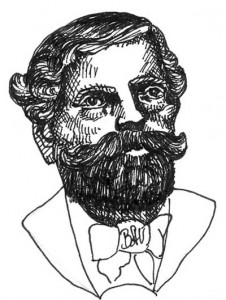
Ágoston Haraszty (1812 – 1869)
* Futak, Hungary – † Corinto, Nicaragua
Haraszty, landowner, was the founder of the American grape culture, and is identified as the Father of California Wine Industry. He introduced the Zinfandel red wine grape and the
Muscat of Alexandria. In 1861 he imported 100 000 grapevines from Europe. The world famous Hungarian Tokaj grapes were among the 1,400 varieties. His book, published in 1862: Grape Culture, Wines and Wine Making with Notes upon Agriculture and Horticulture, remained the wine making classic authority in the English language for a century. Haraszthy also invented an efficient gold refining process.
Mór Kaposy (1837 – 1902)
* Kaposvár, Hungary – † Vienna, Austria
Kaposy, physician and dermatologist, conducted significant research in the fields of malignant tumors and veneral diseases. He determined the Sarcoma indiopathicum multiplex haemorrhagicum (1872), known today as Kaposy’s Sarcoma, a cancerous sarcoma often associated with AIDS. This form of skin cancer is often the first symptom of AIDS.
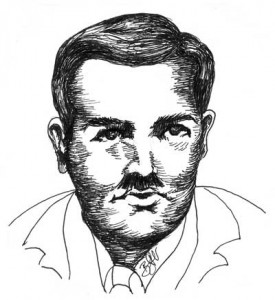
János Kemény (1926 – 1992)
* Budapest – † Etna, New Hampshire, USA
Kemény, mathematician and professor, moved to the United States in 1940. He was drafted at the age of 17, and as a brilliant mathematician was assigned to the Manhattan Project, a project which was designated to research nuclear energy. He chaired the mathematics department at Dartmouth College, and from 1970 to 1981 he was the president of this school. He is the co-inventor of the BASIC programming language, and is therefore considered the father of microcomputing. In 1983 he founded his own company, named True Basic Inc. He was first to introduce the idea of e-mail.
Manhattan Project
In 1939 Leo Szilárd and Edward Teller asked Einstein to alert President Roosevelt that German scientists were probably constructing an atomic bomb. Teller translated Einstein’s German letter into English and brought it to the White House personally. In a few weeks, the Manhattan Project scientific team started nuclear research under the direction of five nuclear physicists, headed by the Italian Enrico Fermi. The others were Fermi’s famous Martians, otherwise known as Hungarians: dr. John von Neumann, dr. Leo Szilárd, dr. Edward Teller and dr. Eugene Wigner. The results of the Manhattan Project were outstanding: the chain reaction of atomic fission was discovered, the first nuclear reactor began working and the atomic bomb was built. When the research group learned that the Supreme Command of the United States planned to drop an atomic bomb on Japan, they sent a letter of protest to president Truman, together with several fellow scientists, but to no avail.
André Kertész (1894 – 1985)
* Budapest – † New York
Kertész, world famous photographer, was one of the founders of photojournalism. Already in 1912, he documented life on the streets and people in their natural environments with photographs. He lived and worked in Paris from 1925 and in New York from 1936. Kertész pioneered in the popularization of the use of the small format camera. He worked almost exclusively with small cameras throughout his life. Completely self taught, Kertész always considered himself an amateur: I am an amateur and I intend to remain an amateur for the rest of my life. The photograph gets its beauty from the very truth with which it is stamped. This is why I guard myself against any kind of professional trickery or virtuosity…
József Kliegl (1795 – 1870)
* Baja, Hungary – † Budapest
As a mechanical engineer and inventor, Kliegl had countless inventions. Some of these are: a typesetter with keyboard (1840), calculator, harvesting machine, a steam locomotive that could be used on mountainous terrain and could be stopped at any point of an inclined track; a monorail which transported and laid its own rail tracks, and a musical notation recording machine (1856). This last invention was a machine atached to a piano, which immediately wrote down the notes (improvised compositions) struck on the piano on a paper roll conveyed by a clock machinery.
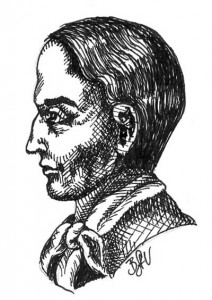
Sándor Kőrösi Csoma (1784 – 1842)
* Kőrösfalva, Transylvania – † Darjeeling, India
Kőrösi Csoma, a linguist, globetrotter and explorer, studied oriental languages in Göttingen, Germany. He set out on foot to Asia, to find the ancient homeland and origins of the Hungarians. He spoke 20 languages and compiled a glossary of 16 European and Oriental languages. Suffering unimaginable privations, he lived and studied in lama monasteries and laid down the foundations of the Tibetan language. Kőrösi Csoma prepared the first grammar index of the Tibetan language and the first English-Tibetan dictionary. Two of his works were published in Calcutta, India: Grammar of the Tibetan Language, and Essays towards a Dictionary Tibetan and English. These works are regarded as milestones in Oriental linguistics. His Sanskrit-Tibetan-English Dictionary was published after his death. The first Buddhist monument of Europe, the Csoma-Stupa was unveiled in Budapest in 1982.
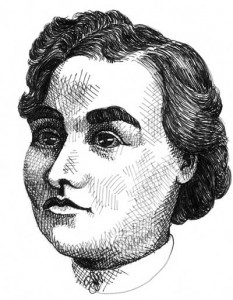
Mária Markovits (1875 – 1954)
* Kiskunhalas – † Kiskunhalas, Hungary
Árpád Dékáni’s artistic Hungarian Halas Lace designs could not be made with the centuries old, traditional methods. It was Mária Markovits, embroiderer and artist, through whom Dékáni’s designs became reality. Markovits developed a new, unique and original technique of needle-pointing for the Halas Lace. She educated generations of lace embroiderers. The world famous Halas Lace, which is entirely handmade, is also known as the Gold of Kiskunhalas.
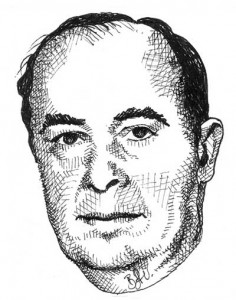
John von Neumann (1903 – 1957)
* Budapest, Hungary – † Washington, DC
Von Neumann, mathematician, chemist and physicist, is the legendary symbol of quick and logical thinking. His fellow scientists characterized him this way: Most scientists invent what they are able to, Neumann (invents) what he chooses to. At the age of 23 he was already a university professor in Berlin, Germany. He laid down the mathematical foundations of quantum mechanics and new branches of mathematics, conceived the theory of games and its economic application, and developed the theory of continuous geometry. During and after World War II, von Neumann served as a consultant to the armed forces. He took part in the development of the first atomic bomb as a member of the Manhattan Project scientific team. Complicated mathematical relationships had to be calculated in studying the shock waves produced by testing the atomic and hydrogen bombs. This led von Neuman to develop a high speed electronic computer. He invented the logical basic concepts of the computer, such as the binary code – the basic element of modern computer operations – memory, program storage and the command system. In 1955, he was appointed to the Atomic Energy Commission. He gave the following warning regarding atomic energy to the senate subcommittee: The combination of nuclear physics with irresponsible or rude politics is already able to cause terrible wounds in society. With even the slightest progress, … this same combination of physics and politics will turn the Earth uninhabitable.
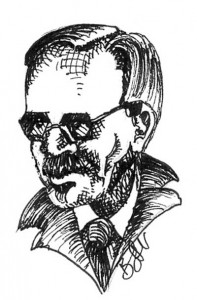
Ábrahám Géza Pattantyús (1885 – 1956)
* Selmecbánya, Hungary – † Budapest
Pattantyús, mechanical engineer, taught at the Technical University of Budapest from 1907 to his death at the departments of electrotechnics and mechanical and structural engineering. Pattantyús was the educator of generations of engineers and founder of the so-called „Pattantyús School”. He wrote 13 technical books and 150 technical articles. The process of design for sizing the airtank for reciprocating cylinder pumps is known throughout the world as the Pattantyús-method.
Ferenc Pávlics (1928 – )
* Balozsameggyes, Hungary –
Pávlics, mechanical engineer, worked as a researcher at the headquaters of the armored vehicle arsenal of the US army in Detroit, at the defense research laboratory of General Motors and at the electronics division of the Santa Barbara Plant. He conducted research regarding the improvement of vehicles designed to travel on rough terrain and the use of vehicles designed for travel on the surface of the Moon. He developed for NASA the first vehicle in history which traveled on extraterrestrial terrain, the moon rover, used on the Moon by the Apollo 11 expedition in 1969. The rover, known as Newcomer, was improved by NASA under Pávlics’ direction, and landed on Mars in 1997 with the space probe named Trailfinder.
Eszter Pécsi (1898 – 1975)
* Kecskemét, Hungary – † New York, USA
Eszter Pécsi, structural engineer, was the first woman to receive a degree in engineering in Hungary (1920). She prepared the structural design for the indoor swimming pool on St. Margit Island (Budapest, Hungary), and the first iron-framed tall building of Budapest, the Hospital on Fiume út. In 1957 she had to leave Hungary, and worked in Vienna, Austria for a year where she designed the city’s first multi-level parking garage. From 1958 she lived and worked in New York. She was the structural designer of the first reinforced-concrete skyscraper (Hotel Americana) and two skyscrapers erected for the professors of Columbia University. For these three works, Pécsi received the year’s best structural engineering design award from New York City. She was also the structural designer of numerous buildings of New York University. She developed a special method to prepare the site of the foundation for the skyscrapers along the Hudson River, for which she was named the best structural engineer of the year.
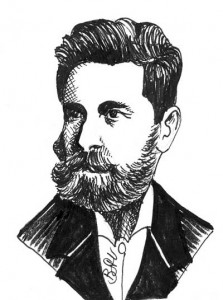
Joseph Pulitzer (1847 – 1911)
* Makó, Hungary – † Charleston, SC, USA
Pulitzer, journalist, editor and pioneer of modern journalism, founded the Pulitzer prize. He organized a collection for the erection of the base of the Statue of Liberty in New York. The fund he started covers the expenses for the statue’s lighting even today.
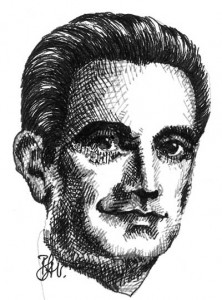
Miklós Rózsa (1907 – 1995)
* Budapest, – † Los Angeles, CA, USA
Rózsa, composer and conductor, publicly performed his first original composition at age 7. The classical music he composed was known throughout Europe. Rózsa began to write film scores in 1937. He signed contracts first with Sándor Korda, a Hungarian producer, living in London, England, then with the Metro-Goldwyn-Mayer movie studio in Hollywood in 1948. During his 40 year career he wrote scores for 93 motion pictures, including Hollywood’s most well-known movies, such as El Cid, Ben Hur, Quo Vadis, The Jungle Book, Spellbound, etc. Simultaneously, he taught film music composition for 20 years at South California University, which was the first such course in the USA. His classical music is performed throughout the world. Rózsa was the only composer who commemorated the 1956 Hungarian Freedomfight with an Overture to a Symphony Concert.
Ernő Rubik, Sr. (1910 – 1997)
* Pöstyén, Hungary – † Budapest
Rubik Sr., mechanical engineer, was the most famous Hungarian airplane designer. Between 1935 and 1987 he designed 31 different types of sailing and sport airplanes, using his own patented inventions. These inventions are significant throughout the world. By using aluminum alloys he was able to design lightweight and inexpensive airplanes.
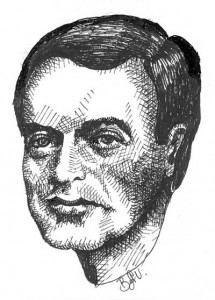
Ernő Rubik, Jr. (1944 – )
* Budapest, Hungary –
Rubik, architect and designer, created several logic games, the most famous one being the Rubik’s Cube or Magic Cube (1974). Enthusiasts of the cube have organized clubs, contests and world championships. The Rubik’s Cube
has entered the Museum of Modern Art in New York City.
Béla Schick (1877 – 1967)
* Boglár, Hungary – † New York City
Schick, pediatrician, discovered the world famous Schick Test, which determines the degree of susceptibility to diphteria. He co-discovered with Clemens von Pirquet the new medical science of allergy. He was also the inventor of the Schick safety razor blade.
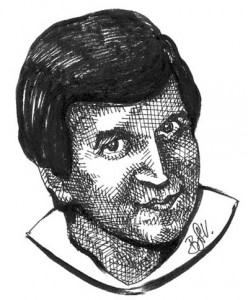
Charles Simonyi (* Budapest 1948 – )
Simonyi, computer programer, has been head designer of Microsoft (the world’s largest software company) since the early 1980’s. Simonyi designed such programs as Windows, Word for Windows, and Microsoft Excel. He also introduced a program identifier naming convention, the well known Hungarian notation. This is quite useful and valuable and helps programmers produce better code faster.
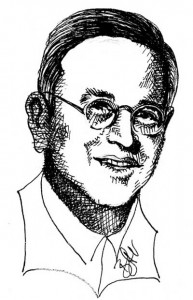
Szilárd (1898 – 1964)
* Budapest – † La Jolla, California, USA
Szilárd, nuclear- and biophysicist, and with Edward Teller called the attention of Einstein and president Roosevelt to the possibility of military use of nuclear fission. Szilárd was a member of the Manhattan Project scientific team, which dealt with the research of nuclear energy. The development of the chain reaction of nuclear fission by combining uranium with graphite is associated to Szilárd’s name. He was first to use plutonium to bring about an atomic reaction. He designed and built together with Fermi the first nuclear reactor. Throughout his life, Szilárd was against the military use of nuclear energy. Therefore he founded an anti war council called Council to Abolish War. After World War II his main interest was in biology. He adapted the theoretical methods of physics to the use in every day life. and developed radiotherapy, a new method for treating cancer. Leo Szilárd is known as the father of biophysics.
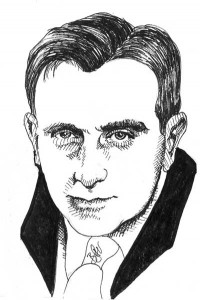
Edward Teller (Budapest 1908 – )
Nuclear physicist Teller’s main field of research is thermonuclear reaction. He was a member of the Manhattan Project scientific team, and took part in developing the nuclear chain reaction and the first atomic bomb. He also had a leading role in the building of the American hydrogen bomb (1952), and is therefore called the father of the hydrogen bomb. He had an important part in the development of submarine torpedoes and the formulation of Star Wars (the United States missile defense system). Teller is strongly anticommunist and his scientific work regarding nuclear explosives significantly contributed to the United States’ peaceful victory of the Cold War and collapse of the Soviet Union.
During a visit to Paks, Hungary in 1991, professor Edward Teller spoke about his new discovery, according to which there is only one language, and that is Hungarian. (Mai Nap, Budapest, 1991.9.)
News
Two fifteen year old Hungarian girls, Zsófia Bodó of Budapest and Bernadett Gaál of Hódmezővásárhely, will be part of NASA’s Mars-exploration program. They reached the highest results in their age group in a competition organized by the Planetary Society, an international organization. Out of the 10,000 youths from 44 countries who applied, there were only 9 winners: 1 American, 1 Brazilian, 1 Pole, 1 Taiwanese, 3 Indians, and the 2 Hungarian girls. They will soon join the Mars exploration in the command center in San Diego. They will take part in the analysis of the photographs taken by the Mars Global Surveyor space probe, and will even be able to direct the space probe’s remote controlled camera. Their task is to determine the landing site for a future expedition in 2011. (American Hungarian People’s Voice, 2-23-2001)
